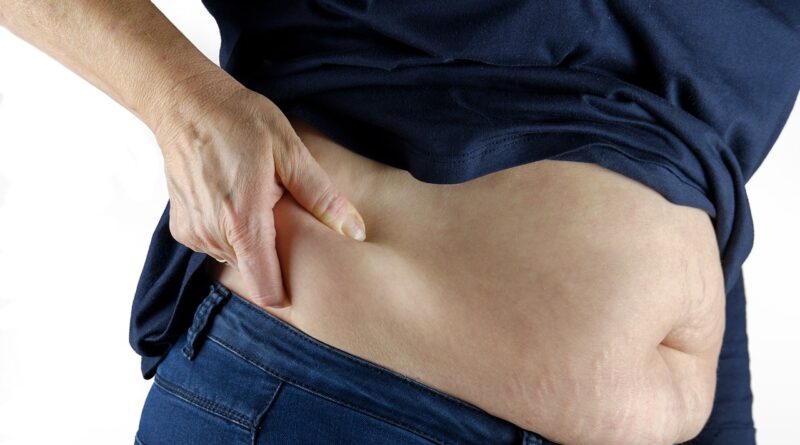South Asians & Visceral Fat: The Silent Health Risk You Can’t Ignore
Ravi had always been the lean one in his family. His cousins teased him, calling him sukha papad—the thin, crispy snack beloved across India. He laughed it off, confident that his wiry frame meant he was healthy. But when a routine check-up revealed high cholesterol and early signs of insulin resistance, his doctor delivered an unsettling truth. South Asians & visceral fat: the silent health risk you can’t ignore—Ravi wasn’t just thin; he was TOFI—Thin Outside, Fat Inside. Beneath his seemingly healthy exterior, layers of dangerous visceral fat were wrapping around his organs, increasing his risk of metabolic disorders.
Thinness can be deceptive, especially for South Asians. Medical experts warn that body mass index (BMI) alone fails to tell the whole story. Many who appear fit—those with a BMI under 23—could still be harboring visceral fat, the kind that clings to the liver, heart, and pancreas. Unlike subcutaneous fat, which sits just under the skin, visceral fat is active, releasing inflammatory chemicals that fuel insulin resistance and heart disease. South Asians, particularly Indians, are genetically predisposed to storing this harmful fat, even when they seem to have an ideal weight. A body that looks lean may, in reality, be waging an unseen battle against internal toxins, slowly disrupting its metabolic balance.
Why BMI Is an Incomplete Health Metric?
Experts have long relied on Body Mass Index (BMI) to assess health, but in the case of South Asians, its accuracy is increasingly under scrutiny. A simple calculation—weight in kilograms divided by height in meters squared—yields a number that, on the surface, categorizes individuals into neat brackets: normal (18.5 to 23), overweight (23 to 25), and obese (above 25). Yet, as scientists delve deeper, they find that BMI is an imprecise compass, often pointing in misleading directions. A person weighing 70 kg with a height of 170 cm registers a BMI of 24.22, placing them on the brink of being overweight. But what does this number truly reveal?
The fundamental flaw of BMI lies in its simplicity. It treats the body as a uniform entity, indifferent to its composition. It does not distinguish between muscle, fat, and bone. Consider an athlete, his frame dense with muscle, tipping the scales into the “overweight” category despite his exceptional fitness. In contrast, a sedentary individual with little muscle but significant visceral fat may register a “healthy” BMI while carrying unseen metabolic risks. For South Asians, who tend to store fat around vital organs despite appearing lean, this limitation becomes even more pronounced. Numbers alone cannot tell the whole story; the body is far more intricate than a mere ratio of height to weight.
The Better Alternative: Body Composition Analysis (BCA)
The World Health Organization (WHO) draws a stark line: a waist circumference of 90 cm (35.4 inches) or more for men, and 80 cm (31.4 inches) or more for women, signals an increased risk of metabolic complications. Unlike the waist-to-hip ratio, which has long been a standard in health assessments, research suggests that a simple waist measurement is often more revealing. An even sharper tool is the waist-to-height ratio, where one’s waist size is divided by their height—a calculation known as the Body Roundness Index (BRI). It is a metric that, in its quiet precision, captures the body’s true shape and the risks it harbors within. South Asians & visceral fat: the silent health risk you can’t ignore—a warning too often ignored—urges a closer look at the hidden dangers beneath seemingly normal physiques.
For South Asians, where genetics and lifestyle conspire to deposit fat deep within the abdomen, standard measures often fall short. Here, doctors turn to body composition analysis (BCA), a swift, machine-assisted test that unravels the body’s inner architecture. In mere minutes, it maps the distribution of fat, muscle, and visceral deposits—revealing, with startling clarity, what the mirror and scale often fail to show.
The prescription, though simple, is profound: protein-rich nutrition and sustained physical activity. Experts emphasize that building lean muscle is about strength and survival. The muscle acts as a metabolic shield, countering the toxic effects of excess fat and restoring the body’s delicate equilibrium. In a world where appearances deceive, science urges us to look deeper—to measure, move, and reclaim control over our inner health.
Why Are South Asians Prone to Hidden Obesity?
South Asians & Visceral Fat: The Silent Health Risk You Can’t Ignore
- The human body is a master of adaptation, carrying within it the imprints of ancient survival strategies. Among South Asians, particularly Indians, this manifests in a perplexing contradiction—a lean exterior masking an excess of fat deep within.
The Thrifty Gene Hypothesis—An Evolutionary Paradox
- In times of famine, the body, with remarkable foresight, learned to store energy as visceral fat, shielding against starvation.
- This reserve, once vital for survival, now works against modern populations, increasing the risk of metabolic diseases.
- Diabetes, heart disease, and other chronic conditions emerge—not from visible obesity, but from the stealthy accumulation of internal fat.
The Dietary Trap—Fueling a Hidden Danger
- A diet high in carbohydrates but low in protein exacerbates this silent epidemic.
- Unlike muscular individuals, this excess energy does not build strength but settles in the abdomen, unseen but insidious.
The Fetal Origins of Metabolic Risk
- The consequences of malnutrition begin even before birth.
- A child born to an undernourished mother carries a biological predisposition to store fat aggressively.
- When exposed to calorie-dense modern diets, the body responds by accumulating fat rapidly, particularly around vital organs.
An Adaptation Turned Against Its Host
- What once ensured survival now invites disease.
- The modern world collides with ancient biology, creating a health crisis hidden in plain sight.
- South Asians & Visceral Fat: The Silent Health Ris k You Can’t Ignore—an issue demanding attention, understanding, and action.
Some Useful Abbreviations
WHR: Waist to Hip Ratio It is calculated by dividing your waist circumference by your hip circumference. WHO says a moderate WHR is 0.9 less in men and 0.85 or less for women. A WHR of 1 or more is linked to an increased risk of heart disease.
BRI: Body Roundness Index. Look at height, weight, waist and hip circumferences. Calculated through a complex formula – BRI=364.2−365.5×√1−(Waist Circumference in cm/(2π))2/[0.5xheight in cm]2).
BCA: Body Composition Analysis. Done by a machine, it can tell your body fat percentage or how much of your body is made up of fat vs bone and muscle. For example, a body fat percentage of 25% means that one-quarter of your body is composed of fat, and 75% is bone and muscle. It varies by age and gender.
WC: Waist Circumference. This is the easiest to measure, as all you need is a tape measure. According to WHO, a waist circumference of 90cm or more for men and 80 cm or more for women increases the risk of metabolic complications.
Get updates and read additional stories on the Health Orbit Fan Page.
For Guest posts, Sponsored posts and other details, please click ‘Contact Us’ page.




